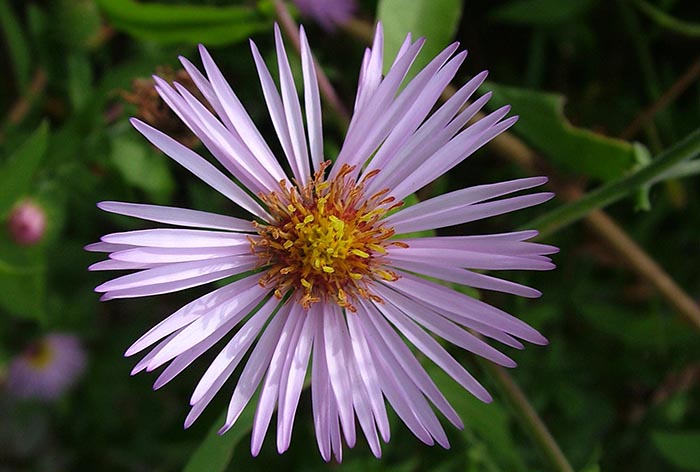Garden Talk
Horticultural Highlight: climbing aster

In this series, the staff of Duke Gardens highlights plants you’ll find within our 55-acre living collection. This week, Doris Duke Center Gardens curator Jason Holmes features one of his favorite fall bloomers.
Botanical name: Ampelaster carolinianus
Common name: Climbing aster
Family name: Asteraceae (Sunflower Family)
Native range: Florida to North Carolina coastal plains & Piedmont regions
Location in Duke Gardens: Charlotte Brody Discovery Garden, Walker Dillard-Kirby Perennial Allée
Site requirements: Sun to dappled shade. Grows from swamps to open, dry, sandy woods.
USDA Hardiness Zones: 6-10

I am always interested in cool climbers. Climbing aster, known to us botanical types as Ampelaster carolinianus, is one of the coolest I know. Botanists think so, too: the prefix ampel means climbing, thus we have the genus “climbing aster” in Latin, too.
This deciduous semi-woody plant grows 6- to 8-foot long sprawling stems. These may be attached to a trellis, arbors or fences, or allowed to ramble through shrubs. Unlike grapevines or English ivy, it has no way to attach itself, so it relies on whatever may be its closest garden companions for support.
Ampelaster is native to lowland marshes and moist areas throughout Florida and a few isolated coastal counties in Georgia, South Carolina and North Carolina. Easily adaptable to our garden soils in the Piedmont, this climber thrives in full sun and has grown magnificently wherever I have planted it.
Its best attribute is the striking floral display in the fall. Like clockwork, climbing aster is covered with clusters of 1-inch flowers in November. It's one of the few plants blooming when leaves are changing to their autumn colors. The flowers have pinkish to purple ray petals that radiate out from the vivid yellow-orange disk flowers in the center. I have found this species to be a great late-season nectar source, drawing in migrating monarch butterflies and other native pollinators.
Photos by Jason Holmes.






